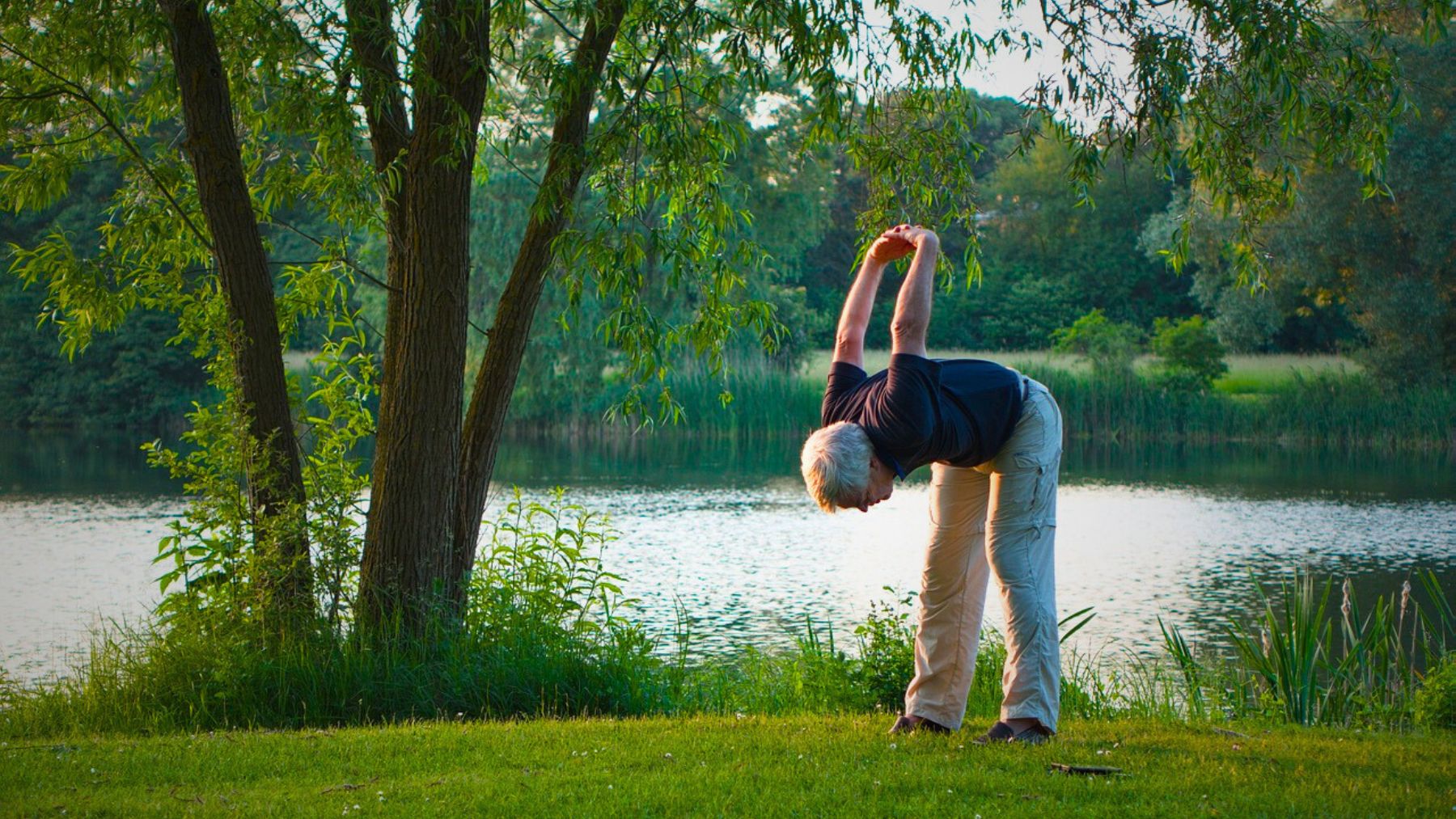Fitness
Extra walking can improve quality of life for patients with heart failure

Heart disease is the leading cause of death in Texas, according to the state health services department.
Congestive heart failure means your heart can’t pump enough blood to meet your body’s needs. There’s no cure, but a recent study of 425 patients using fitness trackers found that between a thousand and 5,000 extra steps a day can improve a patient’s quality of life.
KERA’s Sam Baker talked about this with Dr. Sreenivas Gudimetla, a cardiologist with Texas Health Harris Methodist Hospital Fort Worth and Texas Health Physicians Group.
The exact benefit for heart failure patients of walking is what?
It doesn’t reverse or minimize the disease, but it improves symptoms in people with heart failure. Their shortness of breath improves. Their functional capacity improves, and their ability to perform their activities of daily living improves.
The 1,000 to 5,000 steps. Has that been determined to be sort of the sweet spot for results from exercise?
It varies from person to person. Those numbers come from this study in particular, and from this study that range of steps has been shown to have a benefit.
So the benefit of this study is what then?
In people who actually take extra steps during the day, they have clinically significant health improvements in terms of how they feel, in terms of what they’re able to do during their lives. And it actually encourages them to live a much more active lifestyle and eating healthy, taking better care of yourself overall will indirectly improve survival.
Considering that it doesn’t change the mortality outcome, is it hard to get people with heart failure to embrace exercise?
I think it is crucially important that we try to encourage our heart failure patients to exercise because with how they feel, especially if they’ve been recently decompensated, they’re not going to feel like they want to exercise.
You know, we in a broad sense in the medical field, know that this is extremely important and therefore we have programs in place to try and encourage our patients to be on an exercise regimen and also counseling on other ways of taking care of themselves, such as a heart-healthy diet with limitation of salt intake, so that their risk of volume overload goes way down.
Do some patients have to be convinced of that?
Some patients do, especially if they’ve had, you know, really bad heart failure exacerbations. It takes a lot of time, it takes a lot of effort and it takes a lot of work to enroll and make the trip to cardiac rehabilitation on a day on a regular basis so that they can build up their strength.
The American Heart Association and American College of Cardiology guidelines have steps in place where it is standard of care to begin counseling our patients early on, especially before their hospital discharge or after their initial diagnosis as an outpatient.
Are there any steps people can take to minimize or even avoid heart failure?
There was a study published in late 2000 that broke down the factors that determine one’s survival. Genetics is number one. Number two is lifestyle.
It’s important to educate the population at large when they’re younger because if they eat healthy, exercise, and maintain an ideal weight, all of those things are going to reduce the risk of diabetes and hypertension, which are definite precursors for cardiovascular disease going forward.
So what you do in your teens, twenties, and thirties determines how you do in your forties, fifties, and sixties and beyond.
RESOURCES:
People With Heart Failure Can Step Their Way to Better Health
Just 1,000 Extra Steps a Day Can Improve Health for People With Heart Failure
NIH: Heart Failure
What Is Congestive Heart Failure?
Heart Failure

Fitness
Neither swim nor walk: The exercise retirees over 60 need to focus on, according to a personal trainer

After 60, many retirees start noticing joint pain, slower metabolism, and even unexpected health issues like diabetes or high cholesterol. While staying active is essential, not all exercises provide the same benefits as we age. Álvaro Puche, a well-known personal trainer argues that two of the most popular activities—walking and swimming—aren’t enough to maintain long-term health.
His approach focuses on a type of exercise that supports muscle and bone health, both crucial factors for preventing decline during the golden years. While walking and swimming are great for heart health, they don’t do enough to combat muscle loss, which becomes a major issue after 60. Instead, he recommends an alternative that many older adults tend to overlook. Let’s discover what he says.
The exercise retirees should prioritize after 60
If you want to maintain strength and mobility as you age, strength training is non-negotiable. Lifting weights or doing bodyweight exercises helps prevent sarcopenia, the gradual loss of muscle mass and strength that comes with aging. Without this sort of training, everyday tasks like carrying groceries, climbing stairs, or even getting up from a chair can become more difficult over time.
Strength training also improves bone density, reducing the risk of osteoporosis and fractures. This is especially important because our bones naturally become less dense and more susceptible to breaks with time. By incorporating this training into your routine, you can significantly lower the chances of such injuries.
Additionally, strength training helps regulate metabolism, which tends to slow down, making it easier to maintain a healthy weight. Beyond the physical benefits, it has been shown to improve memory and mental clarity.
The best part is that you can get started with simple exercises like squats, lunges, push-ups, and resistance band workouts, which can be done at home with minimal equipment. You can also adapt them to your fitness level, ensuring you can build strength safely.
More ways for retirees to stay healthy
While strength training should be a priority, a well-rounded routine includes other forms of movement too. Here are some additional ways retirees can stay active and healthy:
- Balance and flexibility exercises, like yoga and tai chi, help improve balance and reduce the risk of falls and injuries.
- Functional training involves movements that mimic everyday activities, like step-ups or carrying weighted objects, making daily life easier and keeping you mobile longer.
- Cardio workouts, such as walking, swimming, or cycling, still have their place for heart health. You just need to pair them with strength exercises.
- Body-engaging activities, like gardening, dancing, and playing with grandkids, keep you moving without feeling like a workout.
While walking and swimming are beneficial, they shouldn’t be the only forms of exercise you rely on. Strength training is the key to maintaining muscle, bone density, and overall health after 60. Aim to incorporate it into your routine at least two to three times a week for the best results. A combination of strength, balance, and cardio workouts will help you stay strong, independent, and full of energy for years to come.
Fitness
Here’s Why You Should Try A Cold Workout, According To Experts

Let’s face it: Running on the treadmill just isn’t the same as running at your favorite park. And, as the chilly winter months drag on, you might be on the fence about moving your workout inside or braving the elements. Experts say you don’t have to—not necessarily.
Exercise is a stressor on the body, so getting active in the cold is “a double whammy” to your system because you’re adding the challenge of keeping yourself warm, says Alexander Rothstein, PhD, an exercise physiologist at New York Institute of Technology. This isn’t a bad or a good thing; it just means that your workout is asking more of your body, and it might feel like it too.
Embracing the cold is all the rage for a reason. (Think: cryotherapy like cold plunges, ice baths, and using an ice pack when you need one.) Cold causes your blood to move rapidly to the important parts of your body like your heart and core, reducing swelling and inflammation quickly, says Asad Siddiqi, MD, a sports medicine physician at NewYork-Presbyterian Brooklyn Methodist Hospital. Beyond that, some cold-lovers say that exposure to icy temps boosts their mental health (and one 2023 study in Biology would agree; it found that participants subjected to cold-water immersion felt more active, alert, and inspired).
Fitness
Seniors, hula hoop your way to fitness and good health

Low-impact exercises are great for elderly people, as they don’t put pressure on the joints. So, try the hula hoop exercise for seniors to have fun while maintaining good health.
Circling a hula hoop around the hips is something that will probably take you back to your childhood days. As you go down memory lane, you will see your happy face while swinging your hips with a colourful hoop. It might have been a long time but you can still use the equipment to maintain good health. Yes, it is not just for fun and laughter, but certainly not just for children. It can be part of your fitness routine too. There are hula hoop exercises for seniors too. From improving balance to coordination, this exercise helps the elderly people in more ways than one.
What is the hula hoop exercise?
Hula hoop exercise involves spinning a colourful hoop around your waist, hips, or other parts of your body using controlled movements. “It is a fun, low-impact exercise that improves coordination, strengthens core muscles, and promotes cardiovascular health,” says fitness expert Abhi Singh Thakur. It can be done by beginners, fitness enthusiasts, and also elderly people.
Low-impact exercise, which reduces the stress or pressure on the joints, has positive effects on physical health of elderly people, as per research published in the Jurnal Keolahragaan in 2022.
What are the benefits of hula hoop exercise for seniors?
Elderly people should do the hula hoop exercise for the following reasons:
1. Improves balance
Hula hooping involves constant weight shifts and controlled movements of the core, hips, and legs. “This challenges the proprioceptors (nerve endings in joints and muscles that send signals to the brain about body position), improving balance and reducing the risk of falls,” explains the expert. During a 2001 study, published in Rehabilitation Practice and Science, researchers found that hula hoop exercise helped to improve balance function in the elderly.
2. Strengthens stabilising muscles
The repetitive circular motion targets stabilising muscles in the core (abs, obliques, and lower back), hips, and legs (quads, hamstrings, calves). “By strengthening these muscles, the hula hoop exercise helps to maintain posture and spinal alignment, and stabilises the pelvis during movement,” says Thakur.
3. Enhances cardiovascular health
Hula hooping is a moderate-intensity cardio workout. “Even a 10 to 15-minute session of hula hooping can increase your heart rate, promote blood circulation, and burn calories, which all contribute to your overall cardiovascular fitness,” says the expert.
4. Improves coordination
The rhythmic movement during the hula hoop exercise can enhance your motor coordination, as it requires synchronisation between the upper and lower body. “This can help people, particularly seniors to stay agile and mobile in daily activities,” says the expert.
5. Supports joint health
Joint health is usually a concern for many elderly people. “Low-impact rotational movements can gently mobilise the hips and spine,” says the expert. This can promote flexibility and reduce stiffness in the joints without adding extra stress or pressure on them.
6. Promotes mental health
Doing the hula hoop exercise can release endorphins, which can help to improve mood, reduce stress, and combat anxiety. “It also engages the brain, enhancing focus and cognitive function,” which gets affected as people grow older,” says Thakur.
7. May reduce risk of osteoporosis
The rhythmic movement while hula hooping applies slight pressure to the hips and spine, strengthening bones and reducing the risk of osteoporosis. About 35.3 percent of older men and women in the world have osteoporosis, as per a study published in the Journal of Orthopaedic Surgery and Research in 2021. It is one of the most common bone diseases associated with a high risk of bone fractures.
You may also like



8 exercises with hula hoops for seniors
Here are simple yet effective exercises with hula hoops that seniors can do:
1. Waist hooping
- To do this hula hoop exercise, stand with your feet shoulder-width apart.
- Place the hoop around your waist.
- Use small circular movements of your hips to keep the equipment spinning.
2. Side-to-side hooping
- Hold the hoop at your waist.
- Move your hips side-to-side instead of circular motions.
- Focus on engaging your oblique muscles.
3. Hula hoop walking
- Start waist hooping.
- Slowly start walking by taking small steps forward, maintaining the rhythm of the hoop.
4. Arm twirls
- Hold the hoop in one hand.
- Spin it around your arm by gently twisting your wrist.
- Switch arms after a minute.
5. Seated waist hooping
- Sit on a sturdy chair with the hoop around your waist.
- Use small hip movements to spin the hoop.
6. Hula hoop stretching
- Hold the hoop overhead with both your hands.
- Stretch it upward, then lean side-to-side to stretch your torso.
7. Hula hoop passing
- Sit or stand in a circle with your friends or family members.
- Pass the hoop around the circle without breaking the chain.
8. Standing oblique twists
- Hold the hoop in front of you with your hands.
- Twist your torso side-to-side while keeping the equipment steady.
Larger hula hoops are better for seniors because they rotate slower, making them easier to use. “A good diameter is 38 to 42 inches (measured from the floor to your navel when standing),” suggests Thakur. Also, go for foam-padded ones, as they are comfortable and reduce the risk of bruising while using.
Who should avoid hula hoop exercise?
Hula hooping can be beneficial for elderly, but some people should avoid them:
- People with arthritis or those with severe joint pain should not do the hula hoop exercise, as the hip and spine movements can aggravate the condition.
- Seniors who find it hard to stand or balance should skip it, as standing exercises may increase the risk of falling.
- Recent surgery patients should also not do it, as it may strain healing tissues.
Hula hoop exercise for seniors is an effective way to stay physically, and mentally fit. But choose the right size to make it easier to use. Also, warm up to loosen your muscles and prevent injuries.
Related FAQs
Does hula hooping flatten your stomach?
Hula hooping strengthens and tones your core muscles, which can contribute to a flatter stomach over time. However, fat loss in this area depends on your overall diet and calorie deficit. Hula hooping alone won’t spot-reduce belly fat, but it’s a great addition to a full-body fitness routine.
How many minutes a day should I hula hoop?
For seniors, 10–15 minutes a day is a good starting point. As you build endurance, aim for 20–30 minutes, 3–5 times a week. Consistency is key to seeing benefits without overexerting yourself.
-

 News1 week ago
News1 week agoHamas releases four female Israeli soldiers as 200 Palestinians set free
-

 Business1 week ago
Business1 week agoInstagram and Facebook Blocked and Hid Abortion Pill Providers’ Posts
-

 Politics1 week ago
Politics1 week agoOklahoma Sen Mullin confident Hegseth will be confirmed, predicts who Democrats will try to sink next
-

 Culture6 days ago
Culture6 days agoHow Unrivaled became the WNBA free agency hub of all chatter, gossip and deal-making
-

 Nebraska1 week ago
Nebraska1 week ago3 years of the Nebraska Examiner: Looking back for inspiration and ahead to growth, with your help • Nebraska Examiner
-

 World1 week ago
World1 week agoIsrael Frees 200 Palestinian Prisoners in Second Cease-Fire Exchange
-

 Technology4 days ago
Technology4 days agoMark Zuckerberg says Meta isn’t worried about DeepSeek
-

 Business3 days ago
Business3 days agoTulsi Gabbard Defended Russia and Syria. Now She Must Defend Those Views.





















